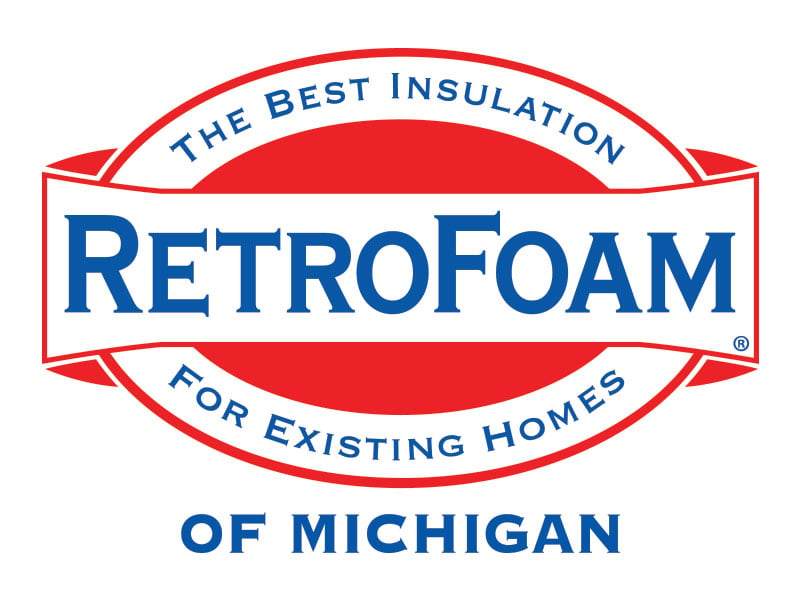Understanding 1-Hour Burn Tests and Foam Insulation for Michigan Homes
injection foam insulation | spray foam insulation | michigan insulation code


If you’re researching any type of remodeling for your existing home or building a new home, you are likely reading a lot about code requirements.
Attempting to make heads or tails of what is required and how to pass the building code can be challenging. This is especially true when you get thick into the weeds about the structure's safety. For the purpose of the article, we’re going to discuss 1-hour fire testing, its requirements, and how to make sure your foam insulation meets the code.
RetroFoam of Michigan has been helping homeowners navigate the tricky waters of understanding building codes for more than 20 years.
Let’s break down in simple, homeowner-friendly terms what a 1-hour burn test is and what it means when it comes to foam insulation.
What's a 1-Hour Burn Test?
Think of a 1-hour burn test as a safety check to see how well a wall can stop fire from getting through for at least one hour.
During this test, one side of a wall is exposed to intense fire and heat. To pass, the other side of the wall must stay protected for at least 60 minutes.
Foam Insulation by Itself Isn't Enough
Foam insulation (both spray foam and injection foam) alone doesn’t pass this test because it can catch fire if it’s left exposed.
Imagine foam insulation as a marshmallow near a flame – by itself, it melts and burns.
But here’s the good news: Foam insulation can still meet building codes when used properly with other materials.
How Foam Insulation Meets the Code
According to the 2015 Michigan Residential Code (Section R316), foam insulation must always be covered with a thermal barrier, like drywall.
This barrier is like a protective shield – it prevents foam insulation from igniting easily in case of a fire. A common barrier is ½-inch drywall, giving at least 15 minutes of fire protection.
RetroFoam insulation and the other spray foam insulation products offered by RetroFoam of Michigan are Class 1 fire-rated. This means they don’t help fires spread (they’re not a catalyst) and self-extinguish once the flame is removed.
However, a 15-minute thermal barrier isn’t the same as a 1-hour fire rating. If your home specifically requires a 1-hour fire-rated wall – for example, walls separating apartments or duplex units – you’ll need thicker, special drywall known as ⅝-inch Type X gypsum board. When installed properly on both sides of the wall, this drywall can give your wall assembly a full 1-hour fire rating.
Residential, Apartment, and Commercial Requirements
- Single-Family Homes: Usually only require foam insulation to have a thermal barrier (½-inch drywall).
- Duplexes and Apartments: Walls separating units typically require a 1-hour fire rating, meaning thicker drywall (⅝-inch Type X) on both sides of the wall.
- Commercial Buildings: Often need walls rated at 1-hour or more, using approved assemblies with materials like Type X drywall covering the foam.
Alternative Solutions: Intumescent Coating
In areas like attics, crawl spaces, or rim joists where installing drywall may not be practical, contractors can use fire-protective coatings designed specifically for spray foam insulation.
DC 315 is one of the more familiar options in the industry, but it’s not the only option. Here at RetroFoam of Michigan, we use No-Burn, which serves multiple roles, including a Class II vapor retarder, a thermal barrier, and an ignition barrier, all in a single application.
These coatings are intumescent paint, which means they swell up and form a protective char layer when exposed to high heat. This slows the spread of fire and protects the foam underneath for at least 15 minutes. Intumescent coatings have been tested and approved as an equivalent thermal barrier under the International Building Code and are accepted by the Michigan code when applied according to the manufacturer's specifications.
While these coatings don’t provide a full 1-hour fire rating on their own, they are a smart and code-compliant solution for insulating tricky areas without compromising safety. When used properly, these coatings allow spray foam to meet safety requirements in areas where drywall just isn’t feasible.
Want to Learn More?
If you’re curious about how foam insulation works, what codes really mean, or how to make your home more energy efficient and safe, head over to our Learning Center.
We’ve got tons of easy-to-understand articles and videos to help you feel confident about every step of your insulation journey.
Key Points
- Foam insulation alone isn’t fire-rated.
- It always needs to be covered (drywall or special coatings).
- RetroFoam insulation won’t spread fire and self-extinguishes quickly once the flame is removed.
- Specific walls in apartments or commercial spaces must meet stricter fire safety standards (1-hour rating).
- DC 315 can be used to meet thermal barrier requirements where drywall isn’t practical.
Related Articles
What is Fire Rating for Insulation?
What is a Thermal Barrier and When is it Needed with Spray Foam?
What is an Ignition Barrier and When is it Needed with Spray Foam?
Thermal Barrier vs. Ignition Barrier: What’s the Difference?
What is DC-315, and Why the Spray Foam in Your New Build Home May Need It
About Amanda Ringler
Amanda previously has worked as a breaking news and crime reporter, TV news producer, and editor in Flint and Detroit. Throughout her career as a journalist, she has won several awards from The Society of Professional Journalists - Detroit Chapter and the Michigan Press Association. As part of the RetroFoam of Michigan family, Amanda uses her experience as a journalist to write content that will help educate homeowners on the benefits of foam insulation. When Amanda isn’t writing, she’s spending time with her husband and rescued huskies. She also loves knitting, making art, cooking, and hosting dinner and a movie night for friends and family.

.jpg)
